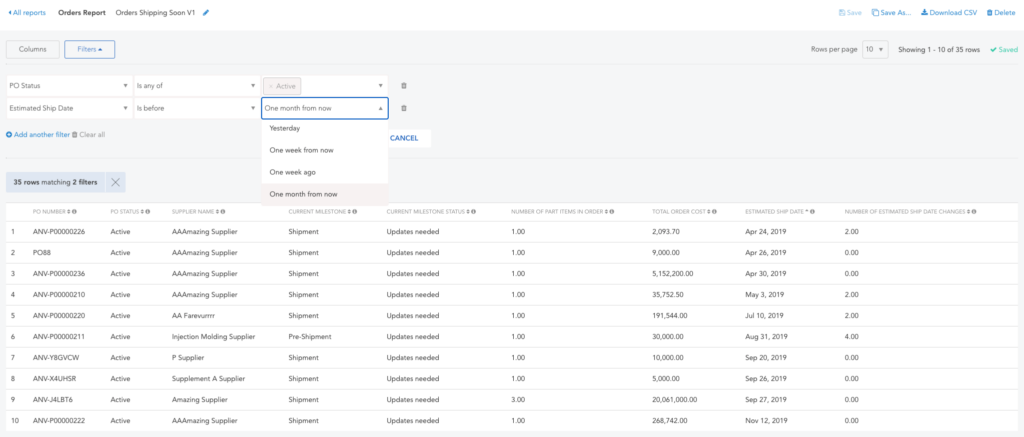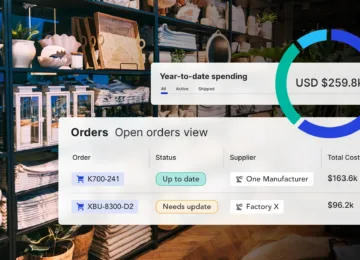After placing an order, it’s important to coordinate your shipments on the right schedule. But how do you know when it’s time to do so? Because lead times vary for different parts, it’s best to book shipments based on when the order will be ready to ship, rather than when the purchase order was issued. To do this, create and regularly update a report of orders that are shipping soon. Depending on how many open orders you have at any given time will give you an idea of how often you will need to update this report to stay organized with your shipment bookings.
Identify whose responsibility it is to book shipments
The incoterms on the purchase order specifies who is responsible for paying for and managing the shipment plus the additional logistical activities that take place like insurance, documentation, and if needed, customs clearance. While this could fall on the brand or supplier side, the report you create will come in handy for either party responsible.
Create a report for orders shipping soon
To create this report from scratch, you’ll need a few rows and relevant columns:
- Each row should represent an order
- Include the following columns in your spreadsheet:
- Order number
- Supplier
- Responsible for freight
- SKU number
- Lead time
- Quantity
- Estimated ship date
- Note that you must update columns E and F as you receive order updates
- When new orders are placed, add them as a new row in this spreadsheet and sort by the estimated ship date to see orders that are shipping soon
- As orders are shipped, you can archive them to a different sheet on the report and keep your report up to date
Below is an example of what this report could look like:

Download a report template for orders shipping soon
Rather than creating the report from scratch, you can download a template here.
Once you’ve populated the report, you can determine a reasonable cadence to update it and send it out to your respective external and internal partners. We recommend updating it when suppliers perform the following actions:
- Accepts a PO
- Confirms production for a PO
- Confirms the estimated shipment date for a PO
Automatically generate this report
It’s easy to generate this report automatically using Anvyl. On the platform, both suppliers and brands can input an estimated ship date for accepted purchase orders. As more orders are entered into the system, a pre-built report that highlights all of your Orders Shipping Soon can be generated in a few clicks. While this includes all orders shipping within the next 30 days, you can filter this report further to only include orders shipping now or orders shipping in the next 15 days to better help you book shipments.



